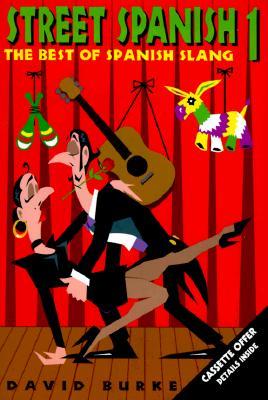Every language has its informal words and slang. When a student reaches a certain level in their language learning process it is only natural to learn the less academic form of the language, isn’t it?
I have given a few private Spanish classes in the past and I still remember the day that one of my students came to me with the book Street Spanish 1 and asked if we could use it in our lessons. I decided to give the book a chance and use it every once in a while in order to bring some variety into our classes. Before planning a lesson with the book I decided to analyze its content and see what could be used to help my student.
The book is separated into 10 lessons in which casual dialogue between two people is analyzed and then English translations for certain words and expressions are provided. At the end of each chapter there is a vocabulary review and an activity section where students work on writing exercises, crossword puzzles, multiple choice quizzes, and word matching activities. The book also comes with audio activities which help students train their ear and familiarize themselves with the rhythm and pronunciation of the language.
What I enjoyed about the book is that for each idiomatic expression there were some very amusing illustrations provided. For every expression, students are given its literal translation as well as its true meaning. For example, in chapter 1 the phrase “Hoy, tropece con Maria en la calle” is written under a picture of two women falling down a cliff together. The student first sees the literal translation of the phrase ( along with the picture) and then they are encouraged to figure out the real definition; in this case “Today I bumped into Maria on the street” would be the correct translation of the phrase.

The book has a very engaging and entertaining way of teaching informal Spanish expressions, but as I continued working with the book I realized that there were many things that I had to modify and change for my lessons. At first I got the impression that this was a book focusing on Peninsular Spanish, but there were times when I was not sure if one particular dialect was being focused on. Overall the words and phrases were from Spain, but there were also some Argentine, Mexican, Puerto Rican and Cuban words randomly being used. I even noticed two or even three different dialects being used in one sentence. Personally, I think that mixing so many dialects could be very confusing for students who are planning to travel or live abroad. What the book could have done is probably give more individual attention to certain regions or countries so as to make things less confusing.
"Overall the words and phrases were from Spain, but there were also some Argentine, Mexican, Puerto Rican and Cuban words randomly being used."
The chapters also focus on many useful word and expressions, but there were many things that seemed outdated and uncommon. I remember that words like carramba, ole, and merengue were used many times throughout the book and I had to constantly explain to my students that these words were commonly used on television, but not in real life. After working with this book for two months both my students and I decided to put the book aside and look for something more up to date and specific to one dialect.
Pros-
· The book provides literal and figurative definitions along with amusing illustrations.
· Fun comprehension activities are found at the end of each chapter.
· English translations are provided for every dialogue as well as synonyms and antonyms for certain words.
· Words are labeled by country when they are not in Peninsular Spanish.
· Listening activities are easy to understand and the voice actors speak at a clear and slow pace.
Cons-
· Many of the words and expressions are outdated and uncommon.
· The book does not focus on one particular dialect, but about 70% of its content is in Peninsular Spanish.
· Certain English translations are grammatically incorrect (a lot of mistakes with prepositions).
· The book is somewhat short and a bit overpriced.
· The audio CD is not entirely necessary.
For a better look at informal Spanish I would recommend using The Red-Hot Book of Spanish Slang: 5,000 Expressions to Spice Up Your Spainish by Mary McVey Gil and Brenda Wegmann.




